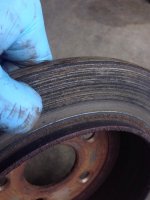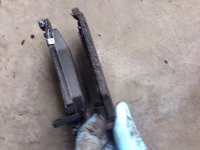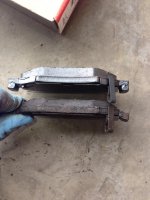Skeeterbait
New member
Happy Saturday!
What would cause excessive/uneven brake wear on the rear brakes? The passenger side, inside, rear pad is completely gone. While the outside pad and both pads on the other rear wheel have 1/4-3/8 (eye ball measured) left.
2013 JK Rubicon, 6 speed. Stock.
52K miles.
Thanks
Skeeterbait
What would cause excessive/uneven brake wear on the rear brakes? The passenger side, inside, rear pad is completely gone. While the outside pad and both pads on the other rear wheel have 1/4-3/8 (eye ball measured) left.
2013 JK Rubicon, 6 speed. Stock.
52K miles.
Thanks
Skeeterbait



